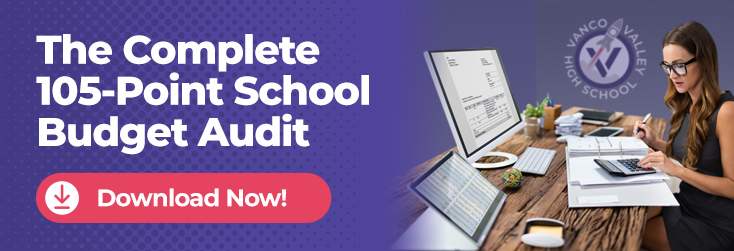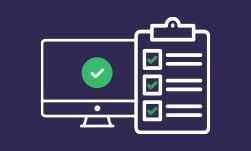
In the intricate web of educational administration, few tasks are as vital yet often misunderstood as managing school budgets. Budgets are complex, as this budget guide for the Philadelphia school system demonstrates. For educators and administrators alike, a firm grasp of the diverse types of school budgets is not merely beneficial — it's indispensable.
Whether you're a seasoned educator navigating the financial landscape or a new administrator stepping into the realm of fiscal responsibility, comprehending the nuances of school budgets and education budgeting models is key to fostering effective resource allocation, strategic planning and, ultimately, student success.
Whether you're striving to optimize resources, enhance educational outcomes or ensure fiscal sustainability, a nuanced understanding of school and school district budgets serves as an invaluable compass guiding you toward your shared goal of empowering the next generation.
Table of Contents
- Breaking Down School Budget Components
- Innovative Budgeting Approaches for Modern Schools
- Effective Budget Planning
- How Vanco Can Help
- Summary
- Frequently Asked Questions
What Are the Main Types of School Budgets, and How Do They Differ
Operating Budgets
Operating budgets serve as the financial backbone of educational institutions, encompassing day-to-day expenses and resources they need to function. These budgets typically cover expenditures such as salaries, supplies, utilities, maintenance and administrative costs.
- Sources of funding: Operating budgets derive funding from various sources of revenue, including government funding allocations and other public funds, donations, grants, fundraising initiatives and tuition fees for private institutions.
- Allocation: The allocation of an operating budget involves meticulous planning to ensure that essential expenses are adequately covered. Schools prioritize spending based on factors such as access to funding plus staffing needs, curriculum requirements, facility maintenance and student services (such as library services).
Capital Budgets
In contrast to operating budgets, capital budgets are geared toward long-term investments in the school's infrastructure, facilities and equipment. Capital budgets facilitate significant expenditures aimed at enhancing the physical and technological resources of the institution.
- Sources of funding: Capital budgets are often funded through bonds, grants, capital campaigns or specific allocations from federal funds and other governmental bodies. These funds are earmarked for projects such as building renovations, technology upgrades, equipment purchases and infrastructure improvements.
- Allocation: Allocation of capital budget funds requires careful planning and consideration of the school's strategic priorities and future needs. Schools must prioritize projects that align with their missions, enhance learning environments and promote sustainability.
Program-Specific Budgets
Program-specific budgets are tailored to fund particular educational programs, initiatives or activities within the school. These budgets allocate resources to support extracurricular activities, special education costs, technology integration efforts and other targeted initiatives.
- Utilization: Program-specific budgets play a crucial role in advancing schools' educational objectives and catering to students’ diverse needs. By allocating resources to specific programs, schools can enhance student engagement, promote academic success and foster a well-rounded learning experience.
- Alignment: It is essential for program-specific budgets to align with the school's goals, priorities and educational objectives. Schools must allocate funds strategically, ensuring that annual revenues and other resources are directed to initiatives that contribute to student achievement and overall institutional excellence.
Restricted or Special Project Budgets
Restricted budgets are earmarked for specific purposes or projects, often subject to stringent guidelines or usage requirements. These budgets may arise from grants, endowments or designated funds aimed at supporting particular initiatives.
- Purpose: Restricted budgets serve various purposes, including funding for special projects, scholarships and tuition costs, research endeavors or community outreach programs. They provide targeted support for initiatives that align with the school's mission and objectives.
- Guidelines: Managing a restricted budget requires adherence to specific guidelines, restrictions and reporting requirements. Schools must ensure compliance with funding formulas and stipulations while maximizing the impact of these resources on targeted initiatives.
Innovative Budgeting Approaches for Modern Schools
As the landscape of education evolves and becomes increasingly complex, traditional budgeting approaches may no longer suffice to meet the diverse needs of modern schools and district services. From performance-based budgeting to zero-based budgeting, these methodologies offer fresh perspectives on resource allocation, enabling schools to maximize efficiency and support student success.
Line-Item Budgeting
Line-item budgeting is a traditional approach that involves allocating funds based on specific categories or line items within the budget. While widely used in many schools, this approach has advantages and disadvantages.
|
Pros |
Cons |
|
Simplicity: Line-item budgeting is straightforward and easy to understand, making it accessible to administrators, educators and stakeholders. |
Lack of flexibility: This approach may limit flexibility in reallocating funds to address emerging needs or priorities and excess costs. |
|
Stability: By allocating funds to predetermined categories, line-item budgeting provides stability and predictability in financial planning. |
Limited strategic focus: Line-item budgeting may not align closely with the strategic goals and priorities of the school, leading to potential inefficiencies in resource allocation. |
Performance-Based Budgeting
Performance-based budgeting emphasizes the link between funding and performance outcomes, aiming to allocate resources based on the expected impact on student achievement and institutional goals.
|
Pros |
Cons |
|
Accountability: Performance-based budgeting promotes accountability by tying funding to measurable outcomes and performance metrics. |
Data challenges: Implementing performance-based budgeting requires robust data systems and metrics to measure outcomes accurately, which can be challenging for some schools. |
|
Strategic alignment: This approach encourages schools to align budgetary decisions with strategic priorities, fostering a more targeted and effective use of resources. |
Complexity: Performance-based budgeting may be more complex to implement and manage compared to traditional approaches, requiring additional training and resources. |
Program and Planning Budgeting
Program and planning budgeting focuses on funding specific programs or initiatives rather than traditional line-item categories, fostering a more strategic and outcome-oriented approach to resource allocation.
|
Pros |
Cons |
|
Strategic focus: Program and planning budgeting enables schools to prioritize funding for programs that directly contribute to student success and institutional goals. |
Resource intensive: Implementing program and planning budgeting may require significant time, effort and resources to develop and manage program budgets effectively. |
|
Flexibility: This approach provides greater flexibility in allocating resources based on the evolving needs and priorities of the school. |
Coordination challenges: Coordinating funding across multiple programs and initiatives may pose challenges in ensuring coherence and alignment with overall strategic objectives. |
Zero-Based Budgeting
Zero-based budgeting requires schools to justify every expense from scratch, starting from zero dollars, rather than basing budget decisions on previous allocations.
|
Pros |
Cons |
|
Cost efficiency: Zero-based budgeting encourages a thorough review of all expenses, promoting cost efficiency and eliminating unnecessary spending. |
Resource intensive: Implementing zero-based budgeting requires significant time and resources to conduct detailed reviews of expenses and justify funding decisions. |
|
Strategic prioritization: By forcing schools to justify every expense, zero-based budgeting helps prioritize funding for initiatives that align closely with institutional goals and student needs. |
Short-term focus: This approach may prioritize immediate cost savings over long-term strategic investments, potentially compromising the school's future sustainability. |
Site-Based Budgeting
Site-based budgeting delegates budgetary authority and decision-making to individual schools or departments, empowering them to tailor resources to their specific needs and priorities.
|
Pros |
Cons |
|
Flexibility: Site-based budgeting allows schools to respond quickly to local needs and priorities, fostering greater flexibility and autonomy in resource allocation. |
Inequity: Site-based budgeting may exacerbate disparities in resource allocation between schools or departments, particularly in districts with varying levels of funding and resources. |
|
Accountability: By decentralizing budgeting authority, site-based budgeting promotes accountability and ownership among school leaders and stakeholders. |
Coordination challenges: Coordinating budgetary decisions across multiple sites or departments may pose challenges in ensuring alignment with district-wide goals and priorities. |
Effective Budget Planning
Budget planning
is a cornerstone of financial management in any organization, and educational institutions are no exception. Effective budget planning is essential for ensuring the efficient allocation of funds and the realization of strategic objectives.
Key Points
1. Set clear goals and priorities: Begin the budget planning process by establishing clear goals and priorities aligned with the mission and vision of the institution. Identify key cost drivers and areas of focus such as academic programs, student services support and special education services, facility upgrades and professional development initiatives.
2. Involve stakeholders: Engage stakeholders, including administrators, faculty, staff, parents and community members in the budget planning process. Solicit input, gather feedback and ensure that diverse perspectives are considered when making budgetary decisions.
3. Prioritize flexibility: Build flexibility into the budget to accommodate unforeseen circumstances, fluctuations in enrollment, changes in funding levels and emerging priorities. Maintain a contingency fund to address unexpected pupil expenditures or seize opportunities as they arise.
4. Seek external resources: Explore opportunities to supplement traditional funding sources through grants, partnerships, sponsorships and fundraising initiatives. Leverage external resources to support innovative programs, capital projects and special initiatives that enhance the educational experience.

5. Invest in professional development: Prioritize investments in professional development for staff members involved in budget planning and financial management. Equip them with the knowledge, skills and tools they need to navigate complex financial issues and make informed decisions.
For a more comprehensive understanding of budgeting in education, we recommend exploring our Budgeting in Education - Comprehensive Guide. This resource offers in-depth insights, practical tips and valuable resources to support effective budget planning in educational settings.
Additionally, don't miss out on our eBook, The Comprehensive Guide to School Budget Planning. It provides a detailed roadmap for navigating the intricacies of school budget planning, with practical strategies, case studies and templates to guide you through the process.
How Vanco Can Help
When it comes to efficient budget management and seamless transactions in educational institutions, Vanco offers a range of tailored solutions designed to streamline financial processes and enhance fiscal transparency. With Vanco's comprehensive suite of services, schools can simplify budget planning, monitor actual expenditures in real time and ensure compliance with financial regulations.
Vanco's budget management tools provide administrators with intuitive platforms for creating, tracking and analyzing budgets, empowering them to make informed decisions and optimize resource allocation.
With Vanco's expertise and commitment to excellence, schools can navigate the complexities of budget management with confidence, freeing up valuable time and resources to focus on their core mission of delivering high-quality education.
Summary
This guide explored various budgeting approaches to offer insights into their functions and implications. From traditional line-item budgeting to innovative methods like performance-based and program-specific budgeting, this post outlines diverse strategies for allocating resources effectively within educational institutions. Each approach comes with its own set of pros and cons, catering to different organizational needs and priorities.
Dive deeper into the intricacies of your school's budget and its implications by exploring related articles and resources. Understanding the nuances of budget planning and management empowers educators, administrators and stakeholders to make informed decisions, foster innovation and advance their mission of providing high-quality education.
Through continuous learning and proactive engagement with financial matters, schools can navigate the complexities of budgeting with confidence, driving positive outcomes for students and the entire school community.
Frequently Asked Questions
How does my school use its budget, and what factors influence allocation?
Your school uses its budget to cover various expenses, including salaries, infrastructure, materials, technology and programs that support student learning. The allocation of funds is influenced by several factors:
- Educational priorities: The school's educational goals and priorities play a crucial role in determining how funds are allocated. This can include areas like STEM education, arts, sports or improving literacy rates.
- Student needs: The specific needs of the student population, such as special education services, English language support or advanced placement programs, can influence budget decisions.
- Regulatory requirements: Schools must comply with state and federal regulations, which can mandate certain expenditures or programs.
- Community input: Feedback from parents, teachers and community members can impact budget priorities and allocations.
- Resource availability: The overall financial resources available to the school or district, including funding from local, state and federal sources, will shape the budget.
What best practices should schools follow for effective budget planning?
For effective budget planning, schools should adhere to several best practices:
- Strategic alignment: Ensure the budget aligns with the school's strategic educational goals and priorities.
- Stakeholder engagement: Involve various stakeholders, including teachers, parents and community members, in the budgeting process to gather diverse perspectives and build consensus.
- Transparency: Maintain transparency in the budgeting process to build trust and accountability, allowing stakeholders to understand how decisions are made.
- Regular review and adjustment: Continually monitor and review the budget to adjust for any unforeseen changes or challenges, ensuring the school can adapt to evolving needs.
- Long-term planning: Incorporate long-term financial planning to prepare for future needs and investments, not just immediate expenses.
How can Vanco help schools improve their budgeting and financial management?
Vanco offers school payment solution that can help schools enhance their budgeting and financial management practices:
- Streamlined payment processing: Vanco provides efficient payment processing solutions, allowing schools to manage transactions smoothly and reduce administrative burdens.
- Fundraising support: With tools designed to aid in fundraising efforts, schools can increase their revenue streams and allocate more resources toward their priorities.
- Financial reporting: Vanco's financial reporting tools can help schools track and analyze their budgeting and spending, facilitating better financial decision-making.
- Compliance assistance: Vanco ensures that schools' financial management practices comply with relevant regulations, reducing the risk of financial discrepancies.
- Customization: Vanco offers customizable solutions that can be tailored to meet the specific budgeting and financial management needs of individual schools or districts, ensuring that the tools provided align with the school's unique requirements.
Unlock the Power of Effortless Budgeting and Immediate Results!
Experience the thrill of mastering your school's budget with our free template. It's more than a tool; it's your shortcut to financial clarity and control.















